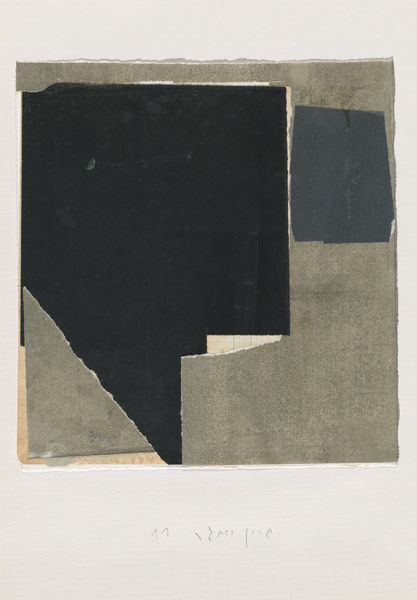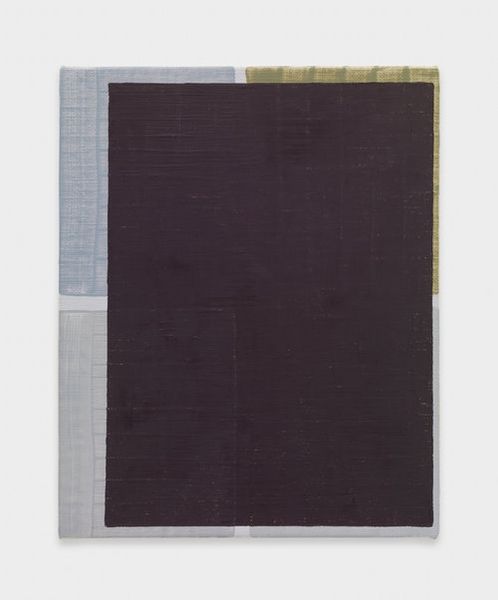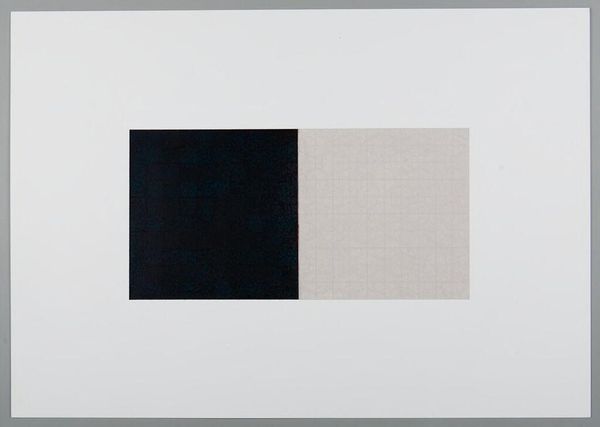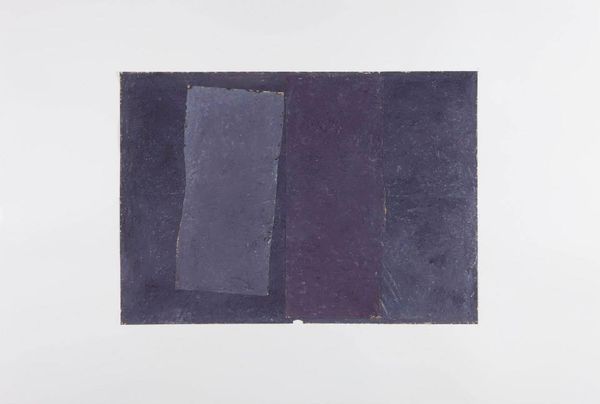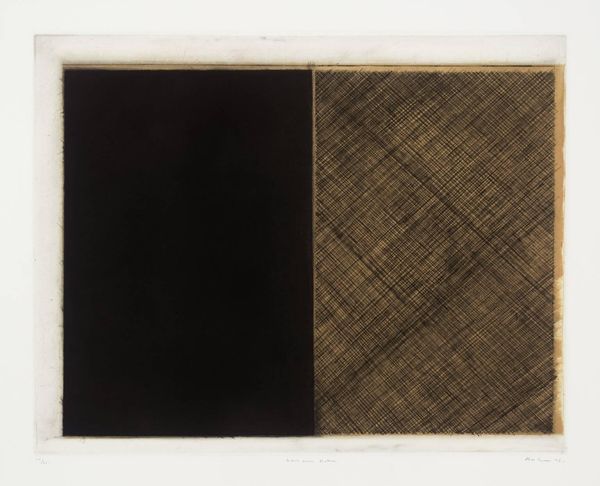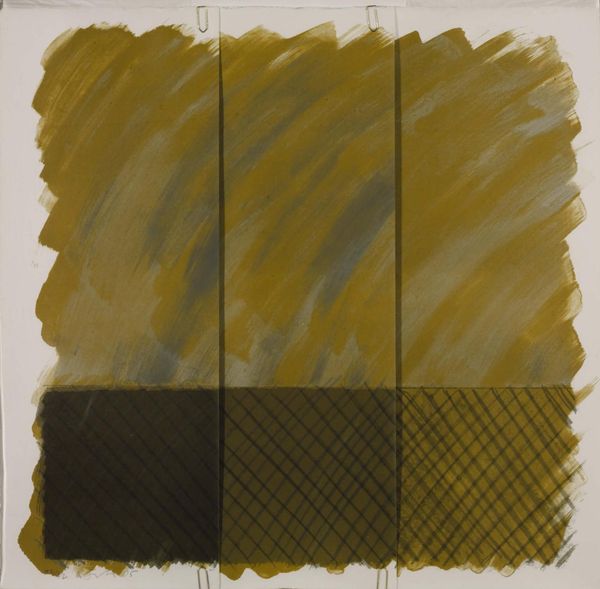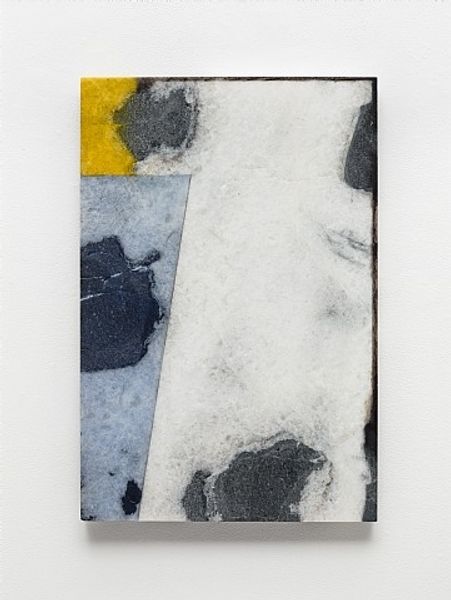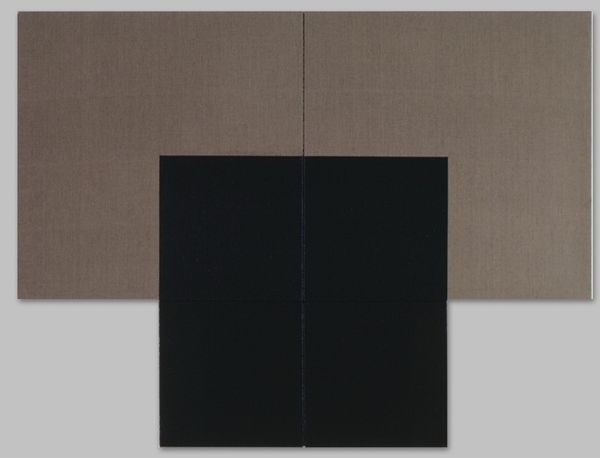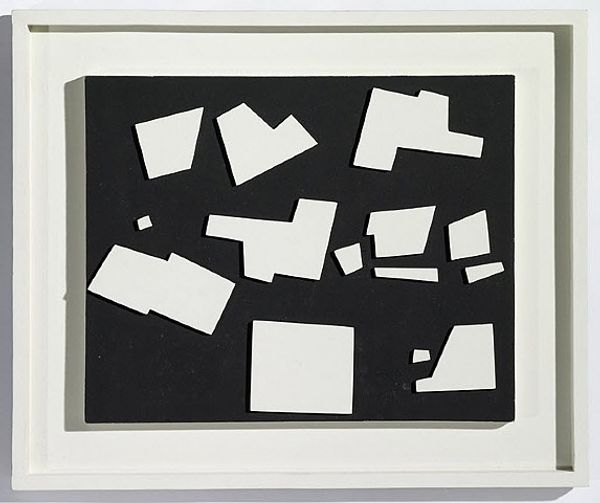
mixed-media, painting
#
mixed-media
#
painting
#
constructivism
#
tonal
#
geometric
#
abstraction
#
hard-edge-painting
Copyright: Carmelo Arden Quin,Fair Use
Editor: This is Carmelo Arden Quin's "Peinture Madi," created in 1946 using mixed media. I find the overlapping geometric shapes quite intriguing, but also a little severe. What can you tell me about the historical context that might inform our understanding? Curator: Arden Quin's work sits within the MADI movement, which championed non-representational art and questioned traditional artistic conventions, embracing shaped canvases and challenging the boundaries of the art object. Think about post-war artistic and political reconstruction; how does this radical geometric abstraction reject classical notions of beauty? Editor: I see. It's almost like the painting is a deconstruction of itself. Was there a particular social or political statement behind the MADI movement's embrace of geometric abstraction? Curator: Absolutely. The MADI movement was consciously rejecting the old guard, not just artistically but politically. It was active in Buenos Aires during a time of social unrest. This rejection of tradition resonates with feminist theory too: dismantling patriarchal forms in art making and embracing change. Do you see connections between abstraction and breaking down rigid societal structures? Editor: Yes, I do. By stripping away recognizable imagery, the artist might be challenging us to see beyond the surface and question existing power dynamics and visual languages. But did it actually work? How did this piece influence other activist artists? Curator: The legacy of MADI influenced later geometric abstraction movements. Its influence echoes in contemporary explorations of form, material, and even activist artistic interventions that confront systems of oppression by disrupting visual norms. It serves as a reminder of art's capacity to be both aesthetically compelling and politically charged. Editor: That’s fascinating; it makes me see this piece in a whole new light, going beyond the shapes themselves. Thanks for sharing this radical reading. Curator: And thank you for your astute observations; understanding historical context allows us to appreciate the depth and social significance behind what might seem like 'mere' abstraction.
Comments
No comments
Be the first to comment and join the conversation on the ultimate creative platform.
